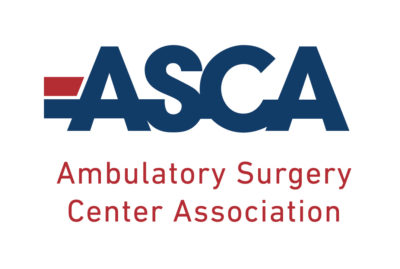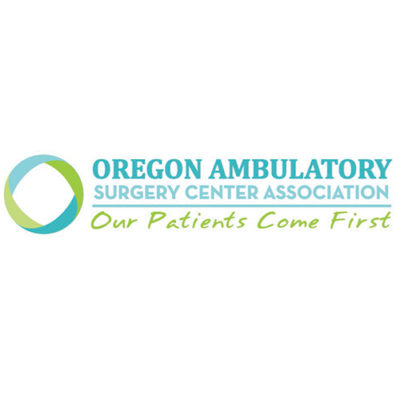Knee
Overview
Whether you are a Division I athlete, weekend warrior, or a hard-working parent, you count on your legs to keep you moving. Knee pain that limits your movement can be an added stress to an already stressful life. From our four surgeons with an ABOS Subspecialty Certificate in Orthopedic Sports Medicine (the highest of any group in Oregon and SW Washington), to our team of fellowship trained total joint surgeons, the Knee Specialists at CSS have the capability to diagnose and treat a wide spectrum of knee ailments.
Conditions & Treatments
The knee is the largest joint in the human body and proper function and health of the knees is required to perform most everyday activities. The knee is made up of the lower end of the femur (thighbone), the patella (kneecap), and the upper end of the tibia (shinbone). Articular cartilage, which is a smooth substance that protects the bones and allows them to move freely, covers the ends of the three bones. Between the femur and the tibia are C-shaped cushioning wedges known as the menisci that act as “shock absorbers.” Large ligaments (tough bands of tissues) help hold the femur and the tibia together in order to stabilize the joint by preventing excessive movement. The remaining surfaces of the knee joint are covered by the synovial membrane, which is a thin lining that releases fluid that lubricates the cartilage, reducing the friction within the knee joint. All of these components work together to facilitate proper function of the knee.
Total Knee Replacement
If the knee experiences severe damage due to arthritis or traumatic injuries, performing simple, day-to-day activities can become very difficult. An individual might even start to feel pain while sitting or lying down. If non-operative treatments such as medications, injections, bracing, therapy, and the use of assistive walking devices such as walkers or crutches are no longer helpful, a total knee replacement might be an effective option to relive pain and restore normal motion.
Total knee replacement, also known as total knee arthroplasty involves removing damaged potions of the knee and covering the surfaces of the bones with prosthetic implants generally made of metal alloys, and high-grade plastics or polymers. The purpose of having a total knee replacement is to relieve pain. Knee replacement can also re-align the knee and help restore function, allowing for a “normal” range of motion. Total knee replacement surgery is typically performed on individuals with advanced osteoarthritis of the knee and should only be considered when more-conservative treatments have been exhausted and deemed insufficient.
A total knee replacement primarily replaces the surface of the bones as opposed to the bones itself. Generally, the operative process takes anywhere between one to three hours to complete and occurs in the following order:
- Bone Preparation – During this step, the damaged cartilage along with a thin layer of the underlying bone is removed from the end of the femur and the tibia.
- Positioning of the Implants – The cartilage and bone removed from the previous step is then replaced with a femoral component and a tibial component to recreate the surface of the joint. Depending on the integrity of the bones and the physician’s preference, these components may be cemented or “press-fit” into the bone.
- Resurfacing the Patella – Depending on the integrity of the patella and the physician’s preference, the undersurface of the patella may be cut and resurfaced with a plastic “button.”
- Inserting a Spacer – In order to create a smooth, gliding surface, a medical-grade plastic spacer is inserted between the femoral and tibial component.
After total knee replacement surgery, there will be some pain, but the medical team will provide the proper medication to make the patient as comfortable as possible. Walking and knee movement will being soon after the surgery where a physical therapist will provide instructions on the specific exercises to strengthen the leg and restore knee movement to allow for walking and other activities post operatively. The majority of the recovery process will occur at home where proper care must be taken in terms of wound care, diet, and activity as prescribed by the physician and physical therapist. Patients who have undergone total knee replacement surgery generally resume most activities four to eight weeks post operatively. Each patient is unique, so the recovery period will vary depending on the level of activity the individual hopes to resume; this should be discussed with the physician as well as the physical therapist.
Partial Knee Replacement
If the knee experiences severe damage due to arthritis or traumatic injuries, performing simple, day-to-day activities can become very difficult. An individual might even start to feel pain while sitting or lying down. If non-operative treatments such as medications, bracing, injection, and the use of assistive walking devices such as walkers or crutches are no longer helpful, a partial knee replacement might be an effective option to relive pain and restore normal motion provided certain criteria are met.
Partial knee replacement also known as unicompartment knee replacement, a “uni,” or a partial knee resurfacing, involves removing damaged cartilage of the knee and covering the surfaces of the bones with prosthetic implants generally made of metal alloys and high-grade plastics or polymers. Unlike a total knee replacement which removes all of cartilage, a partial knee replacement removes cartilage from a particular region. The purpose of having a partial knee replacement is to relieve pain. This surgery can also re-align the knee and help restore function, allowing for a “normal” range of motion. Partial or uni knee replacement surgery is typically performed on individuals with advanced osteoarthritis that is limited to just one part of the knee. A partial knee replacement is known to feel more “natural” than a total knee replacement since the healthy part of the bone, ligaments, and cartilage are kept. Additionally, a partial knee replacement is associated with a quicker recovery, less post-operative pain, and less blood loss as compared to a total knee replacement. On the other hand, the disadvantage of a uni or partial knee replacement is the potential need for more surgery in the future.
A partial or uni knee replacement primarily replaces the affected surface of the bones and cartilage as opposed to the bones themselves. Generally, the operative process takes anywhere between one to two hours to complete and occurs in the following order:
- Exposure and Evaluation of the Knee – The first step in unicompartmental knee replacement is to view the arthritic part as well as all other portions of the knee. On occasion, the physician may find more advanced arthritis than expected in the portions of the knee thought to be normal. In these instances, the physician may elect to convert to a total knee replacement.e
- Bone Preparation – During this step, the damaged cartilage along with a thin layer of the underlying bone is removed from the end of the femur and the tibia.
- Positioning of the Implants – The cartilage and bone removed from the previous step is then replaced with a femoral component and a tibial component to recreate the surface of the joint. Depending on the integrity of the bones and the physician’s preference, these components may be cemented or “press-fit” into the bone.
- Inserting a Spacer – In order to create a smooth, gliding surface, a medical-grade plastic spacer is inserted between the femoral and tibial component.
After partial knee replacement surgery, there will be some pain, but the medical team will provide the proper medication to make the patient as comfortable as possible. Walking and knee movement will being soon after the surgery where a physical therapist will provide instructions on the specific exercises to strengthen the leg and restore knee movement to allow for walking and other activities post operatively. A majority of the recovery process will occur at home where proper care must be taken in terms of wound care, diet, and activity as prescribed by the physician and physical therapist. Patients who have undergone total knee replacement surgery generally resume most activities four to six weeks post operatively. Each patient is unique, so the recovery period will vary depending on the level of activity the individual hopes to resume; this should be discussed with the physician as well as the physical therapist.
Patellofemoral Pain Syndrome (PFPS)
As the knee bends and straightens the patella slides up, down, side-to-side, tilting and rotating along a groove in the femur called the trochlear groove. Repetitive abrasion on any surface of the patella or the femur exerts stress on the soft tissues of the patellofemoral joint and can lead to bruising or wear of the articular cartilage within the knee joint.
Patellofemoral pain syndrome (PFPS), often referred to as a “runner’s knee,” is a common condition that occurs when an individual feels pain in the front of the knee, either under or around the patella (kneecap). It primarily occurs in teenagers and athletes involved in sports and activities that require significant use of the knees. There are many factors that can contribute patellofemoral pain such as overuse of the knee, improper rotation or alignment of the hip and knee joints, muscular weakness or tightness, tightness of the ligaments around the kneecap, or flatfeet.
Surgery is not commonly required and should only be considered if more-conservative treatments have failed to reduce the symptoms. The specific type of surgery depends on the exact nature and the severity of the patellofemoral pain syndrome and should be discussed with the physician extensively when the need is identified.
Recovery post-operatively can take much longer than non-operative recovery. Each patient is unique and their recovery will depend on the treatment method prescribed by the physician.
Patella Realignment
The patella is a flat, triangular shaped bone that protects the knee joint and helps muscles move your leg more efficiently. A healthy patella glides up and down a groove at the end of your femur, pain-free. However, there are a number of conditions that can cause pain when your patella moves.
The goal of patella realignment surgery is to bring the knee cap back into a normal alignment.
Your surgeon will determine which treatment is best for you based on your specific conditions.
ACL Injuries
There are four primary ligaments in the knee that act like strong ropes to hold the bones together in order to keep the knee stable. They are medial and lateral collateral ligaments and the anterior and posterior cruciate ligaments. The collateral ligaments are found on the sides of your knee and are responsible for controlling the sideways motion of the knee and brace it against unusual movement. The cruciate ligaments are found inside your knee joint where they form an “X” with the anterior cruciate ligament (ACL) in front and the posterior cruciate ligament (PCL) in back. They are responsible for controlling the forward to backward motion of the knee. The ACL runs diagonally in the middle of the knee and prevents the tibia from sliding out in front of the femur as well as provides rotational stability for the knee.
An ACL injury occurs when the knee is sharply twisted or extended beyond it’s normal range of motion. There are between 100,000 and 250,000 ACL ruptures annually in the United States. 70% of ACL tears occur as a result of sport participation with a majority of them occurring in individuals between the ages of 15 to 45. The ACL is one of the most commonly injured ligaments in the knee with 70% of ACL injuries being noncontact – sudden change in direction with a planted foot or rapidly stopping. Female athletes are two to eight times more likely to suffer an ACL injury than male athletes and athletes who suffer an ACL injury are at an increased risk of tearing or injuring the other ACL. High risk sports include basketball, soccer, football, volleyball, and skiing.
The operative process to address an ACL tear requires a rebuilding of the ligament. A torn ACL can’t be successfully sutured or sewn back together, so the ligament is usually replaced with a piece of tendon harvested from another source. Commonly used grafts include: the patellar tendon which runs between the kneecap and the shinbone, hamstring tendons from the back of the thigh, or an allograft from a cadaver donor. The choice of allograft and pros/cons of each option will be discussed with the patient prior to surgery.
Small incisions are made around the joint where surgical instruments and the arthroscope (a small camera) will be inserted and the image will be sent to a video monitor allowing the physician to see inside the joint. Using surgical instruments, the torn ACL is completely removed. The next step is preparation and insertion of the graft:
Patellar Tendon Graft – The central portion of the patellar tendon is removed. The ends of the patellar tendon are attached to pieces or plugs of bones from your patella and your tibia which will act as an anchor for the new ACL. A guide wire is inserted for accuracy and a new tunnel is created in the tibia and the femur using a surgical drill. The new ACL graft is tied to the guide wire and the patellar tendon graft is pulled into place. Screws are then used to secure the plugs of bones into the tunnels. The screws may be made of metal, plastic, or an absorbable material. VIDEO
Hamstring Graft – A portion of the hamstring tendons are removed using a surgical tool that is specially designed for this purpose. The hamstring graft is then folded over in order to increase strength and both ends are sutured to facilitate passage through the tunnel. The new ACL graft is tied to the guide wire and the hamstring graft is pulled into place. The physician will decide what devices are best to secure the new ACL graft into place – this can include screws, wedges, post and washers, button-like devices, or cross-pins. Over time, the tunnels will fill in with new bone. VIDEO
Allograft (Cadaver Graft) – Allograft tissue is harvested from a donor and can either have bone plugs similar to a patellar tendon graft or consist entirely of soft tissue. Special tissue processing is used to clean and prepare the new ACL graft. A guide wire is inserted for accuracy and a new tunnel is created between the tibia and the femur for the ACL graft. The new ACL graft is tied to the guide wire and the allograft is pulled into place. Depending on the structure of the allograft (bone plugs vs. pure tissue), appropriate devices will be used to secure the allograft in place. Over time the tunnels/plugs will incorporate into the surrounding bone. VIDEO
patients go through a rehabilitation program which includes physical therapy exercises that are crucial to strengthen your leg muscles and regain knee strength and motion. Each patient is unique, so the therapy program will vary based on his/her level of pain, extent of injury, and desired level of activity.
physical therapy post-surgery occurs in phases:
Phase 1: Range of Motion – This phase will first focus on returning motion to the joint and the surrounding muscles. This phase starts right after surgery and lasts approximately six weeks.
Phase 2: Strengthening – This phase is designed to protect the new ligament and beings after the first phase. Low-impact, cardio exercises such as elliptical trainer or a stair-stepper can be started around eight weeks with weight training starting two to three months post-operation, but only under the guidance of a physical therapist.
Phase 3: Sport-Specific Exercises – In this phase, the physical therapist will work with the individual to develop a tailored rehabilitation program to prepare to return to the desired sport or level of activity. Running is typically allowed somewhere between three and six months with activities that require pivoting and twisting at four to nine months.
Phase 4: Return to Sport – The final phase involves return to sport with significant supervision and usually occurs approximately between six to 12 months.
Typically, most patients return to normal day-to-day activities within three to four months, however, athletic activities and the return of strength can take up to a year; this is something to discuss with the physician as well as the physical therapist. Ultimately, the physician and physical therapist will work together to determine the safest time for the individual to return to their choice of sports. Careful consideration will be used to get the individual back to their chosen lifestyle while minimizing the risk of a re-tear of the ACL.
Meniscal Injuries
The menisci are tough and rubbery pieces of cartilage that fill the gap between the tibia and the femur and help cushion the joint and keep it stable. The outer edges of the menisci are fairly thick while the inner surfaces are thin to conform to the wedges of bone surrounding them. The medial meniscus is more commonly injured than the lateral meniscus as it is firmly attached to the medial collateral ligament and joint capsule. The medial meniscus and lateral meniscus were once thought to be of little use and were often removed when torn. However, more recently, their importance in joint stability, lubrication, and force transmission have become evident.
Meniscal tears are among the most common knee injuries, particularly among athletes who play contact sports. Meniscal tears can often occur during sports where an athlete may squat and twist the knee, causing a tear, or when a player is contacted by another player. Tears that occur as a result of sports related activities are generally diagnosed soon after the injury and are called acute tears. However, anyone at any age can tear a meniscus. When they occur in adults they are most commonly chronic, degenerative tears caused by repetitive use.
Small incisions are made around the joint where surgical instruments and the arthroscope (a small camera) will be inserted and the image will be sent to a video monitor allowing the physician to see inside the joint. Using the surgical instruments, the torn ACL is completely removed. The next step is preparation and the insertion of the graft:
- Partial Meniscectomy – This surgery is used for tears with low potential to heal such as the part located in the inner two-thirds of the meniscus where there is no blood supply. The aim of this procedure is to stabilize the rim of the meniscus by removing as little of the meniscus as possible. The surgical instruments are inserted into the knee through an incision around the joint and used to trim the torn piece of meniscus. VIDEO
- Meniscal Repair – This surgery is used for clean tears located in the outer one-third of the meniscus where there is good blood supply. The surgical instruments are inserted into the knee through an incision around the joint and used to repair the damaged meniscus with the use of various devices as deemed appropriate by the physician. VIDEO
Articular Cartilage Injury
Articular cartilage is a white, smooth connective tissue that a flexible cushions covering the ends of bones in joints. The primary function of articular cartilage is to cushion the bones and enable them to easily glide over one another with very little friction which provides easy movement. A secondary function of articular cartilage is to help distribute load and weight placed across the surface of the joints. Articular cartilage is produced by chondrocytes which are cells that multiply and reproduce very slowly, which mean that articular cartilage injuries do not repair as well as other tissues in the body.
Articular cartilage injuries can be either traumatic or overuse injuries where the cartilage is damaged or breaks down, leading to pain and swelling. Normal wear and tear of everyday activates may cause articular cartilage damage. Articular cartilage injuries frequently occur in athletic individuals who exert a tremendous amount of pressure on their joints, causing the cartilage to wear or break away which can result in a painful catching sensation, swelling, and / or stiffness.
Depending on the nature of the injury, the extent of the damage to the articular cartilage, and the affect it is having on an individual’s day-to-day activities, articular cartilage damage can be repaired with minimally invasive surgery know as knee arthroscopy where small incisions are made around the joint. Surgical tools and the scope, which is essentially a small camera, will go into these incisions and the image will be sent to a video monitor allowing the physician to see inside the joint. A variety of surgical options can be considered and should be discussed with the physician. VIDEO
Regardless of the treatment approach taken, patients go through a rehabilitation program which includes physical therapy exercises that are crucial to strengthen your leg muscle and knee joint. Each patient is unique, so the therapy program will vary based on his/her level of pain, extent of injury, and desired level of activity. Typically, most patients return to normal activities within three to four months, however, athletic activities and the return of strength can take up to a year; this is something to discuss with the physician as well as the physical therapist.






